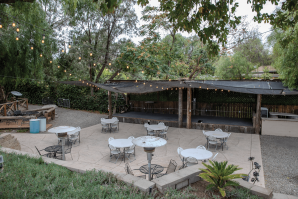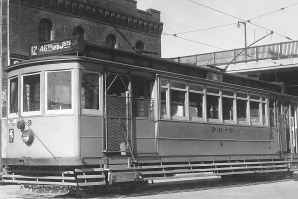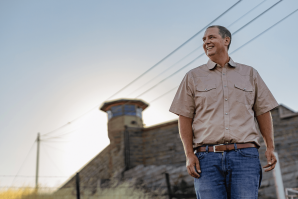It sounds like an urban legend, or maybe a suburban one: A town in San Joaquin County is declared “the most underwater” municipality in the United States in no less than the New York Times — and this without any overflowing bodies of water nearby. But in little more than a decade, the town scrambles its way out of the defaults, foreclosures and enforced “short sales” caused by the subprime loan mess and subsequent recession of 2008. It’s become not only California’s newest incorporated city but also a thriving community with elegant homes, neighborhood schools and three varieties of local parks.
While in the works and developers’ dreams since the late 1990s, Mountain House finally incorporated in July of last year, becoming the 483rd California city. With the city of Tracy as its down-the-freeway neighbor — and with some annexable land between them, which city officials have their eyes on –– Mountain House is now one of the 101 municipalities in the nine counties that call themselves part of the San Francisco Bay Area.
“I’d say that a good 70 percent of the residents commute to work in San Francisco and the Bay Area,” says developer Gerry Kamilos, who’s building the College Park area of Mountain House, which comprises more than 20 percent of the new city. The homes there reflect three distinct design styles (Italianate, contemporary and craftsman) and varying price points. But because they’re all painted in pastel colors which complement the surrounding hills, they seem to blend seamlessly from village to village.
Kamilos serves as this magazine’s tour guide, driver and color commentator one recent afternoon, piloting his Jeep around the neighborhoods he’s been responsible for — as well as the balance of what will be, at build-out, a mixed-use city of homes, recreation, grades K-12 schools, a community college that serves as a “feeder” to state universities, and what he calls “employment centers”: a mixture of offices and light-industrial businesses.
In March of 2024, 90 percent of the town’s registered voters overwhelmingly opted to incorporate as a city. For years, it had been a community services district, which is an almost-city — like El Dorado Hills, which itself hopes to incorporate within the next few years. Cityhood for Mountain House became official that July.
With approximately 30,000 residents, Mountain House has a city manager and city council form of government, with the council’s five members elected at large, rather than by individual district. The mayor is also elected at large rather than by the council itself.
The Mountain House, as it was initially called, began life as more of a hilltop tent. It was constructed of blue jeans material in the mid-1800s by an entrepreneur named Thomas Goodall as a leg-stretching stop for travelers, mainly gold prospectors, making their way by horse and wagon from San Francisco to Stockton and then the Sierra Nevada, crossing over the Altamont Pass.
Related: Mountain House Bar & Grill is in the Middle of Gold Rush History
Working with the local Native American Cholbon tribe, whose land crawled westward along Old River, Goodall eventually replaced the tent with an actual house (made of adobe). A few years later, Simon Zimmerman bought the place, attached his name to the title and added some small buildings to the property. Zimmerman’s Mountain House became a popular stagecoach stop on the road to Stockton. It’s now been 85 years since the last of those buildings were razed.
Today, the hills provide a constant visual amenity for residents, girdling the new city with a rolling taupe landscape that Kamilos says remains out of legal reach for development.
Steve Pinkerton is Mountain House’s first city manager, having been named to the role on the day of incorporation. He served as the general manager of the Mountain House community services district for five years and has held a variety of municipal leadership roles in California over the past few decades, often as city manager, sometimes as redevelopment director in Stockton, Incline Village and Long Beach.
In March of 2024, 90 percent of the town’s registered voters
overwhelmingly opted to incorporate as a city.

He acknowledges the fiscal abyss the town fell into during the recession — when it won that dubious distinction for being supremely “underwater” financially — and says it was kept alive through a combination of developer investment (as long-term loans to the community services district-turned city) and residents’ dedication to “keeping up” the physical look of the community, even when many of their homes were in foreclosure. When Mountain House’s access to county property taxes was essentially cut off, Pinkerton and his staff also created a temporary supplemental property tax.
Pinkerton says the city’s forward-looking accomplishments have included installing security cameras in most of the street lamps, having all neighborhoods connect to five-acre parks and opting to preserve open space rather than build golf courses. “There’s this belief that golf courses produce revenue for cities, which may no longer be true,” he says. “Even senior citizens, who were expected to prefer golf courses, enjoy having the open space. And from a revenue standpoint, building homes in some existing spaces will produce more revenue.”
One innovation that hasn’t worked out as planned, Pinkerton says ruefully, is placing schools in the middle of neighborhoods so that children would be able to walk to class and not have to cross busy streets. “But parents these days still insist on driving their kids to school,” he says, “so you have congestion twice a day. Well, nothing’s perfect.”
Mountain House Rules
- The city is a little over three square miles and its elevation, thanks to the presence of its surrounding hills, is 82 feet.
- Its population is more diverse than many Northern California cities: nearly 55 percent Asian, nearly 19 percent non-Hispanic white, 13 percent Hispanic, more than 7 percent Black and a mixture of other races comprising another 9.5 percent.
- Don Johnson, who’s worked as developer Gerry Kamilos’ project manager on Mountain House for 20 years – and at 72 years old, says this might be his valedictory project – “It’s very gratifying to see how far we’ve come.” As he spoke, at the weekly barbecue Kamilos throws for his on-site crew in the office trailer, someone at the folding table introduced himself as a scout for siting hotels. He gives Kamilos his card before he leaves, prompting Kamilos to say, “A hotel would be perfect here – for visiting relatives, the schools and businesspeople.”
- To accommodate some of those relatives as well as students attending the city’s schools – which include the south campus of San Joaquin Delta College – Kamilos, who also developed Sacramento’s Metro Park and other signature properties, has been building a number of homes with additional units and separate entrances in his College Park enclaves. “They’re definitely not duplexes,” he says. “They’re single-family homes with extra space. Please make a note of that.” So noted.
–
Stay up to date on business in the Capital Region: Subscribe to the Comstock’s newsletter today.
Recommended For You

Mountain House Bar & Grill is in the Middle of Gold Rush History
The remote waypoint has served travelers for more than 170 years
It’s a stop for nightly commuters, a biker bar and a family-oriented historical highway landmark, hosting everything from car shows, weddings and baby showers, to taco Thursdays and Wednesday trivia nights.

Sutter’s Fort Returns to Its Roots: Authenticity Wins Out Over Mythology
Schoolkids still find it a delight, even without living history characters
The Back Story: Sutter’s Fort, the 6-acre state park in Midtown Sacramento, is an underappreciated jewel in the crown of the region’s historic attractions.

When Streetcars Roamed the Capital Region
The classic car system predated light rail by almost a century
While many of us believe that Sacramento’s light rail trains were innovative when they began tooting their way throughout the Capital Region in the 1980s, the current system is actually the reboot of a suburban trolley that slid, wended and awoke its way through the area many decades before.

The Violent, Bloody Folsom Prison Escape of 1903
New book details a dark time in the prison’s history
The prisoners made makeshift knives, or shivs, and used stolen razors during their siege. One prison guard died, and two were injured.




